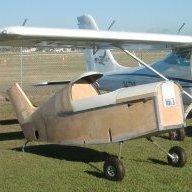You really need all 3, filter, magplug (if fitted) and oil sample to get the full picture:
the filter and mag plug show the accumulation of the wear over the time frame since the last change/clean
oil samples are a snapshot at the time of taking the sample, they are subject to variations due to incorrect sample taking processes
The oil sample results are also limited in the size of the particles that are detected. All elemental analysis (Fe, Cr, Al, Si etc) is limited to about 8 micron in size. The PQ is ferrous material in the 10-200micron range. All the bigger stuff is not reported unless it is visible in the sample. The filter catches everything bigger than about 10-20micron (chewed-up O-rings, piston pin plugs, brass thrust washers etc) and the mag plug catches the magnetic particles that are floating past (more important in engines with gearboxes).
They are like an insurance, you hope that you never see anything but you will be glad you checked when you do see stuff.
Oil analysis, filter inspection and mag plugs can only detect failures and abnormal conditions if they happen over time. A rod bolt failure, dropped valve, conrod/bearing failure etc cannot be predicted with this type of condition monitoring, unless it is preceeded by abnormal running conditions that do show up in oil sample results (excessive oil temps, fuel dilution).
The one value of the oil sample is the oil condition indicators. The ALS report is pretty poor in that respect, there are very few oil condition indicators (only fuel and viscosity). I like to see the viscosity at 40 and 100deg C (standard for engine oils is 100, not 40), the oxidation, nitration and sulphation. The ALS report also doesn't contain any of the additive package elements (Ca, K, Mo, Mg, Zn, B). Additives can change from batch to batch or over time, potentially causing unintended results in some engines (leaching of Cu/Al from oil coolers is a common problem). Or show an incorrect oil used.
I'm using KOWA, same price, twice the results: Query.pdf












